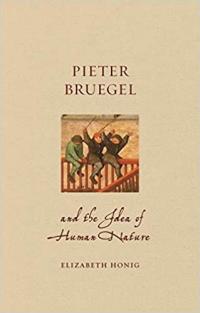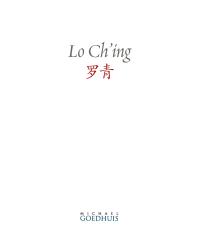Prof. Abby McEwen awarded Inaugural Do Good Campus Fund Grant
The $25,000 grant will focus on providing students opportunities to "understand the process of commissioning and installing public art."


Research in art history and archaeology is an interdisciplinary enterprise.
Engaging diverse theoretical frameworks and research methods, our faculty produce innovative scholarship in the form of books and articles, digital projects, museum exhibitions, public lectures and more. Our faculty lead national networks and conferences (including the Archaeological Institute of America and the College Art Association), providing innovative research frameworks and making significant contributions to UMD's research enterprise.
Consolidated ARTH Statement of Commitment to Diversity, Equity and Inclusion
(Prepared by the DEI Task Force and Approved by GAHA May 2022)
We, the members of the Department of Art History and Archaeology at the University of Maryland, affirm that Black lives matter and condemn the ongoing violence of systemic racism, xenophobia, homophobia, transphobia, and other acts of injustice and harm impacting BIPOC and other marginalized people. We recognize and are willing to confront the roles of Art History and Archaeology in elevating and perpetuating Eurocentrism and its attendant systems of oppression including colonization, exploitation of labor, exploitation of the nonhuman world, sexism, classism, and white supremacy inside and outside academia. We recognize that this list is not all-inclusive and is ever evolving, and to it more will be added. Continuing the work begun by graduate students, faculty, and staff in the summer of 2020 following the murder of George Floyd by police, we commit to building and maintaining a more inclusive, equitable, anti-racist and pluralistic department. As part of this commitment, we recognize the need to confront and redress bias and harm and to challenge monocultural norms and expectations.
In this process, we are inspired by and join the campus-wide efforts to reckon with the University of Maryland’s long record of discrimination, racial injustice, and actions that undermine the very principles of intellectual and moral integrity for which we stand.
We are committed to lifting up and expanding the diversity of our department community and to improving inclusivity and equity in our departmental practices, policies, and culture. In the study and practice of art history and archaeology, diversity and differences are assets. Our department affirms that diversity is expressed in myriad forms, including race, ethnicity, sex, gender, sexual orientation, class, immigration status, body type, language, culture, national origin, religion, age, ability, and political perspective. We are made stronger by inviting in and providing for the diverse voices, approaches and contributions that form the foundation of our twinned disciplines, and which enable our community, as a whole, to thrive. While our disciplines have collaborated in structures of oppression, we wish to affirm the role that we in the humanities and in art history and archaeology can play in helping to envision and make possible a world that is both sustainable and just.
We envision our department as a space of care, safety, and respect for all of our members. All of our voices are valuable and our actions matter. We commit to upholding this vision in our work together.

Read More about Pieter Bruegel and the Idea of Human Nature in the Renaissance
Read More about "The Chaotic Brilliance of the Artist Jean-Michel Basquiat"



Across the Roman Empire, ubiquitous archaeological, art historical, and literary evidence attests to the significance of bathing for Romans' daily routines. Given the importance of bathing to the Roman style of living, imperial patrons enhanced their popular and political stature by endowing eight magnificent baths (the so-called imperial thermae) in the city of Rome between 25 B.C.E. and 315 C.E. This book presents a detailed analysis of the decoration of the best preserved of these bathing complexes, the Baths of Caracalla (inaugurated 216 C.E.). An interdisciplinary approach to the archaeological data, to the textual and visual sources, and to anthropological theories facilitates new understandings of the visual experience of the Baths of Caracalla for a diverse Roman audience and simultaneously elucidates the decoration's critical role in advancing imperial agendas. This reassessment of one of the most sophisticated examples of architectural patronage in Classical antiquity examines the specific mechanisms through which an imperial patron could use architectural decoration to emphasize his sociopolitical position relative to the thousands of people who enjoyed his benefaction. The case studies addressed herein, ranging from architectural to freestanding sculpture and mosaic, demonstrate that sponsoring monumental baths was hardly an act of altruism. Rather, even while they provided recreation for elite and sub-altern Romans alike, such buildings were concerned primarily with dynastic legitimacy and imperial largess. The unified decorative program - and the messages of imperial power therein - adroitly articulated these themes.
Decoration was integral and vital to the Baths of Caracalla (inaugurated 216 CE). Polychrome marbles were to be found everywhere: in the mosaic pavements underfoot; in the freestanding sculpture adorning various niches; and in the revetment of the walls and ceiling vaults. This paper examines the subtext of this sumptuous display, addressing the visual experience of the baths for a wide range of viewers. From the most sophisticated senator to his client, thousands of people a day would have followed the visual cues embedded in the baths' polychrome decoration in order to navigate through them and to engage in an afternoon of recreation and relaxation. The case studies addressed in this chapter, encompassing mosaic, architectural, and freestanding sculpture, demonstrate that endowing monumental baths was a concern of dynastic legitimacy and imperial largess.
In a volume analyzing Classical New York, this paper uses the Baths of Caracalla (inaugurated 216 CE) to consider the role of monuments in the transmission of cultural memory and identity. Thus, the author investigates the Baths of Caracalla's architectural afterlife in America when used as the prototype for, among others, the Palace of Fine Arts, St. Louis (1904); Union Station, Washington DC (1907); Union Station, Chicago (1925); and, most importantly in the context of this study, Old Pennsylvania Station, New York (1910). This paper contrasts the lived experience of the recreated architectural spaces of the Baths of Caracalla in New York with their original design and queries the underlying ambitions of various patrons, whether the emperor Caracalla or Alexander Cassatt, the president of the Pennsylvania Railroad and driving force behind Old Pennsylvania Station. In so doing, it attests to the rich and varied adaptations of the Baths of Caracalla in modern America. This study emphasizes intercultural influences and stresses the value of cross- cultural comparisons to address issues of reception, projection, and appropriation. The author devotes special attention to primary sources that vividly illustrate the ways in which iconic Roman landmarks were promoted as physical embodiments of cultural memory. Newsreels and photographs, for instance, are evocative witnesses to this phase of the Baths' reuse as the model for Old Pennsylvania Station, and these and other sources reveal the ways in which Roman baths were fundamental to the reception of the Classical past in twentieth century New York.
An ancient viewer exiting Herculaneum's Central Baths onto the Cardo IV Superiore could see, across the street, a house whose entrance opened onto a striking vista framed by the fauces and the line of sight offered by successive openings into the atrium, tablinum, and beyond - to a polychrome mosaic decorating the east wall of the house's rear courtyard. This mosaic, depicting Neptune and Amphitrite, gives the house its name and is the subject of this chapter. This essay seeks to use the decoration of the House of Neptune and Amphitrite at Herculaneum in order to explore the decorative program's multivalent strategies with which to engage the Roman viewer; and to articulate aspects of the patron's personal and family identity as revealed through decoration. Therefore, the polychrome mosaic featuring Neptune and Amphitrite is examined first within the space of the home, and then within its regional and cultural contexts.